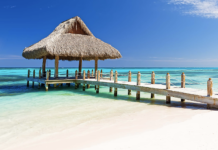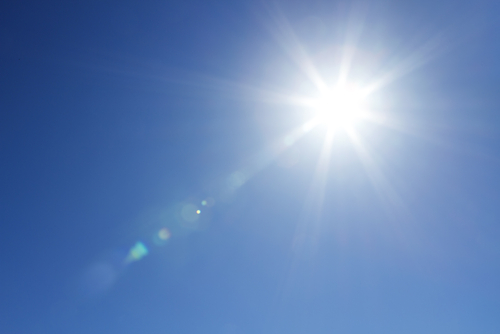Marooned in the Atlantic, 280 miles from the nearest land, Madeira is its own world of fine wines, exotic flowers and mythical landscapes. Jack Pitts explores this idyllic island at one of the most enchanting and beautiful times of year
Cámara de lobos, Madeira © J. A. Alcaide
Lying on the same latitude as Casablanca, the Portuguese archipelago of 4 islands – Madeira, Porto Santo, Desertas and Bugio – is the European Union’s most westerly point. If you wish to pop to the mainland, you’ll have to swim 540 miles – but then, why would you want to leave such a wonderful part of the world?
Madeira boasts superb wine, walks and whale watching, music, flowers and ancient forests. Outside the narrow, whitewashed city streets, the island’s natural scenery – twisted into place by ancient volcanoes – is so unique and genuinely spectacular that much of it is UNESCO protected.
When to go
Luckily for us, Madeira is just three and a half hours from London by plane. So, although the once mighty sea trade from Europe to America is beginning to dry up, the remote the island still attracts over a million tourists a year.
And it’s not hard to see why. Firstly, the island enjoys fantastic weather all year round. Head to Madeira in autumn or spring and you will be met with temperatures in the 20s, air that is rarely humid and trees that stay green and lush. It always feels spring-like here, with the average temperature never fluctuating more than 7 degrees and rarely dipping below 16, even in winter.
This a big part of Madeira’s allure: you can go there anytime and the weather won’t change…only the prices will, although it’s never expensive – indeed, from now until next summer you can snatch yourself a bargain holiday.
Ponta de Sao Lourence, Madeira © Malcolm Browne
Something for everyone
Madeira is often called a “geologists dream” for its abundance of timeless landscapes and geographical anomalies, but there really is something for everyone here – in and out of the cities.
In the cities
It may be something to do with the weather, or perhaps its unusual location, but Madeira’s cobbled streets are a testimony to 500 years of perfecting the art of relaxation.
The island was made famous for its profusion of flowers, which thrive in the volcanic soil. The capital, Funchal, hosts the Madeira Flower Festival in late April but colourful plants and vines adorn the buildings year round and are in full bloom now. For a real treat visit the Botanical Gardens at Quinta do Bom Sucesso to see every species of plant, flower, shrub and tree on the island all under one roof.
Flowers in the Botanical Gardens, Funchal, Madeira © Dirk Hartung
Madeira has embraced its mountainous surroundings with admirable gusto, building several pulse-raising cable cars that disappear into the dizzying peaks. One of the oldest is the Monte Cable Car, a 15-minute climb from Almirante Reis in old Funchal, which provides breath-taking, expansive views
Have you ever wondered what it’s like to descend thousands of metres in a wicker basket on skis steered by a couple of Madeiran locals? Well wonder no more; the Monte Toboggan drifts down the polished cobbles with a chauffeur’s reinforced shoes acting as break and rudder. Dating from at least 1850, this laundry basket helter-skelter was originally a means of transport down to Funchal for the workers who lived on the mountain. At its fastest, the mile and a half journey takes 10 minutes, at an I-wish-I’d-taken-the-bus 30mp/hour – but don’t worry, they’ll go as fast or slowly as you like.
The locals love their music and at night guitar chords can often be heard floating over the red tiled roofs. Go and watch the Madeira Mandolin Orchestra, a group of 30 musicians that play the instrument in all its different shapes and sizes, plucking and strumming Strauss, Bach and Vivaldi.
Pico do Areeiro, at 1,818 m high, is Madeira’s third highest peak © Malcolm Browne
Outside the cities
Escape into the countryside and you will feel like you’ve wandered back in time. Here, you can go from sea to mountain in minutes. Much of the island is covered by the largest surviving area of laurel forest in the world – a UNESCO protected area, which abounds with rare wildlife as it tumbles up and down the hills. Among the trees are hidden 1350 miles of walks (not bad for an island that’s 286 sq miles), many following “levadas” – centuries old stone channels cut through the landscape to irrigate the land. The brave can also walk up Madeira’s tallest mountain, Paul da Serra at 1,862m.
Whale watching, Madeira © Claus Rebler
Sail just a few miles off the island and the ocean floor plunges more than two miles. Not good if you drop your wedding ring from the boat, but unbeatable for seeing rare wildlife. You can expect to see monk seals – of which there are only 500 left in the world – several different types of whales, dolphins and a dizzying array of birds.
The precipitous ocean is not just good for those who prefer to stay above water; below the surface there is another world for scuba divers and snorkelers. The Atlantic swells make surfing a local favourite. In fact, the World Surfing Championships were held on the island in 2001 across the famous beaches of Paul do Mar, Ponta Pequena and Jardim do Mar.
However, if you crave peace and quiet then the group’s second largest island, Porto Santo, may be just what you’re looking for. While Madeira has a population of 270,000, its baby cousin has only 5,000 and features a 9km beach. It can be reached in 15 minutes by airplane or 2 hours by boat.
To dine for
Almost all of Madeira’s produce comes from within the island, its fertile volcanic soil and rich seas making it a paradise for foodies. Scabbard fillet, tuna steak and marinated meat accompanied by traditional Bolo do Caco bread is the staple. A new breed of tourist, drawn to the island by the growing number of 5-star hotels on offer, means that more luxurious food is increasingly available. Try Gavião Novo on the Rua de Santa Maria for fresh fish cooked with a touch of class, and click here for a cornucopia of more top-notch restaurants.
Madeiran wine © Don Amaro
And what better to way to enjoy food than with some Madeiran wine? During the age of exploration, when the island was a port of call for ships heading to South America or the East Indies, vineyards used to fortify their wines with spirits to ensure they lasted the long voyage. On their return, bottles were found to have improved in taste as they were exposed to the movement of the sea and fluctuations in temperature. Today, Madeira’s wines forego the journey but are still exposed to heat and oxidisation to create that special taste.
With its stunning natural scenery, rich culture and divine food and wine, the hardest bit about Maderia will no doubt be leaving it. Saúde!












